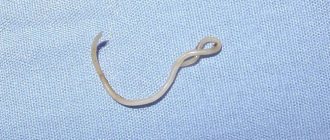If a person has been thinking about a dog for a long time, is not afraid of the need to spend a couple of hours a day outside, and is increasingly looking at the neighbors’ four-legged pets, then it’s time to get a puppy.
And before you start studying sites for selling dogs, you need to understand this issue in detail. After all, the relationship between owner and dog directly depends on which breed is preferred. But the age of the baby is inversely proportional to the amount of hassle associated with care and upbringing.
For what purposes do you need a dog?
The desire to become the owner of a four-legged pet rarely has certain criteria. In most cases, this is simply the need to take care of the puppy, the desire to teach him and raise a faithful and devoted friend. But a mistake in choosing a breed can ruin the brightest and most rosy plans, as well as nullify all the efforts made.
All dogs are conditionally divided into several groups. And depending on their membership in a particular group, they have common character traits:
Hunting. Active, good-natured and sociable. But they need long walks and are unlikely to become worthy guards. Not very suitable for people leading a calm and measured lifestyle. But for lovers of active recreation and hiking, hunters and fishermen, they will be ideal companions.
Decorative. They have a calm and phlegmatic disposition. They easily learn to go to the toilet in a diaper and are devoted to their owners. They require daily care of their skin and coat, are often picky in their choice of diet and suffer from allergic reactions. An ideal choice for an elderly couple or single person;
Sentinels. Dogs with tenacity, intelligence and the ability to protect not only themselves, but also their owner. They need an owner with a strong-willed character who is able to force such a dog to obey. The pet needs serious training and an active lifestyle. Not the most suitable option for apartment living, families with children or for a novice dog breeder.
Companions. An irreplaceable friend who is ready to accompany his owner anywhere and everywhere. They have an unobtrusive and friendly character. They need attention and cannot stand loneliness.
This is important: when choosing a breed, you should also pay attention to the length and thickness of the coat, the frequency and intensity of shedding, as well as the risk of developing allergic reactions or other chronic diseases inherent in the breed.
You may find our article useful: Classification of dog breeds
You should also evaluate the possibility of the dog living in a city apartment or the possibility of him being in an enclosure. Pay attention to our article: TOP 30 dog breeds for living in an apartment
What documents does the breeder provide?
The breeder, along with the puppy, must provide a puppy card, as well as a veterinary passport, which contains notes on the vaccinations given (at least one vaccination).
However, it should be remembered that the breeder does not always provide a veterinary passport; in some cases, you have to prepare it yourself. There is no need to neglect the purchase and sale agreement, which must be concluded when purchasing a puppy. The contract guarantees that the pet can be returned if it turns out to be unpedigreed or sick. In addition, the contract serves as additional insurance against fraudsters; the price will be clearly stated in the text, which the breeder will no longer be able to change. Similar articles:
- Which dog breed to choose
- At what age to get a puppy
- What toys does a puppy need?
- How to train a dog to wear a muzzle
- How to protect your dog from dog hunters
- Proper cleaning of dog ears
At what age to buy a puppy
Once the future owner has decided on the breed, the next step will be selecting a puppy. And in this case, it is necessary to focus on several basic criteria, one of which will be the age of the baby.
Dog handlers recommend giving preference to puppies that have already reached the age mark of 6-8 weeks. The undeniable advantages of such a decision include a certain independence, as well as minimal dependence on the mother.
Such a baby will whine less at night, will be able to eat independently and will not need to use special milk substitutes (unlike a 4-6 week old dog that has been weaned from its mother).
At 6-8 weeks, babies adapt more easily to an unusual environment and are already able to learn the rules of behavior dictated by the new owner. Some puppies are trained by the breeder and are quite good at diapering, which makes the cleaning process much easier.
If the dog has a pedigree.
The pedigree indicates the origin of the dog, but cannot guarantee its quality, just like the titles of the parents. When it comes to choosing a working dog (for sport, hunting, protection, etc.), the working qualities of the parents and the diplomas confirming them are more significant. If dogs with pedigrees are bred without the club's approval, the puppies will not be able to obtain documents of origin, which significantly reduces their cost, but increases the risk of running into offspring from close relatives.
A purebred puppy is distinguished from the usual one by the presence of a metric. This is a document that contains basic information about it (breed, color, name, brand number, date of birth, names and pedigree numbers of parents, breeder and owner). The metric is exchanged for a pedigree when the dog reaches six months of age, but no later than 15 months. The babies in the litter are named by one letter of the alphabet, which is very convenient for those who don’t know how to choose a name for a puppy. But more often it happens that a dog has two nicknames: one official, the other domestic.
A pedigree differs from a metric in that it contains data about ancestors up to the third generation inclusive, indicating their health. It comes in two types: internal (in the state language) and export (in English). The metric may not be exchanged for a pedigree if you do not plan to participate in exhibitions and breeding.
Who to choose - male or female
Dog experts do not give a clear answer to this question. Some breeders prefer exclusively males, while others prefer raising females. Keeping both has its pros and cons, which should be taken into account when choosing a puppy.
Advantages of owning male dogs:
- Endurance;
- Can be kept in simpler conditions;
- A high level of performance is observed throughout the year;
- Stable character, without outbursts of aggression associated with a physiological state.
It should also be noted the disadvantages that will invariably accompany keeping a male dog:
- Tendency to dominate. The dog will regularly strive to seize power and establish superiority over its owner;
- Training boys takes more time from the owner and is somewhat more difficult than training a bitch;
- Tend to avoid following commands flawlessly;
- In the presence of a female dog in heat, there is a clear tendency to run away and a decrease in attention.
If the future owner is not ready to regularly prove his superiority to the dog and control the male, then choosing a female dog would be a good option.
Advantages of owning a bitch:
- They learn much easier and quickly grasp the essence of the new team;
- Less aggressive and not prone to dominance;
- They get along better with children and become indispensable participants in games.
When choosing a bitch, you should also remember a number of difficulties that you will have to face in the process of keeping her:
- Decreased performance during estrus, as well as during pregnancy and lactation;
- Refusal to use the bitch for protective guard duty, as well as the inability to take her hunting, on long walks or travel, starting from the second half of pregnancy and throughout the entire period of feeding babies;
- Relatively low endurance levels.
The future owner should approach the process of choosing the gender of his four-legged friend as carefully as possible. This will avoid unpleasant surprises during the training and subsequent maintenance of the dog.
Choosing a dog breed and size
If you are at a loss as to how to choose a puppy breed, first of all, evaluate your living space. You will have to take into account not only your interests, but also the interests of your future pet. For example, living with a husky or another hyperactive dog in an apartment is a real torment, so instead of this beautiful dog you will have to look for other options.
It is equally important to consider the age of the owner. If an animal is purchased for a family with children, then you need to choose from good-natured and patient breeds. It is easier for older people to buy a dog that does not require exotic care and long walks.
It is worth appreciating the presence of all family members at home. If the apartment is empty most of the day, under no circumstances should you get a pet that cannot tolerate loneliness - either he will howl all the time and damage the furniture, or he will get sick from boredom.
It is advisable to take an active dog for active people, a calm dog for homebodies. A mismatch between the temperament of the owner and the animal can lead to problems in their relationship.
For apartment
Residents of a big city should buy a pet with modest dimensions and a calm character. To maintain routine, choose a dog that is free of hyperactivity, excessive salivation and thick undercoat. This will protect against damage to furniture and contamination of the apartment. Please note that the future family member must be able to get along with other animals, especially outside the home. Solitary walks in a city park are the exception, not the rule.
Breeds with these characteristics include:
- pugs;
- poodles;
- Spitz;
- chihuahua;
- corgi;
- Yorkies;
- lap dogs;
- Basenji;
- toy terriers.
More controversial breeds include Labradors and golden retrievers. These are good-natured, but rather large creatures. If you are ready to walk them often, then you can choose these breeds.
If the apartment is spacious enough, you can take a large and inactive breed, but then it will have to be given a lot of space for a comfortable existence. So, Russian greyhounds, Great Danes and Alabais can live in a large apartment, but they need almost a whole room. And, of course, long walks 2-3 times a day.
For a private home
If living in a private house only means a large area for walking, and the pet will spend most of its time within four walls, be guided by any of the options proposed above. If the purpose of purchasing a four-legged animal is for a protective function and it will only have to live in an enclosure, then it is better to choose a puppy:
- shepherd dogs;
- alabaya;
- Doberman;
- bloodhound;
- Border Collie.
To intimidate others, St. Bernards, Mountain Dogs or Newfoundlands are suitable. Despite their impressive appearance, these dogs are distinguished by their amazing good nature.
Hunting enthusiasts will enjoy greyhounds, dachshunds or Jack Russell terriers. Remember that if you are going to leave the animal in the enclosure even in winter, then it is better to take a Samoyed, Malamute, Husky or other northern breed with a thick undercoat.
Companions for children and the elderly
Labradors, St. Bernards, Samoyeds, Boxers, Huskies and Beagles willingly babysit children. You will have to avoid representatives that are too small or too large. In the first case, the child may accidentally injure the dog while playing together, but in the second the situation will be the opposite.
Older people find it difficult to cope with active pets. They need a good-natured, small and picky dog. Yorkies, Pekingese, Maltese, poodles, pugs, miniature schnauzers and cocker spaniels meet these criteria.
Choosing a puppy: appearance, living conditions
Once the breed and preferred sex of the baby has been chosen, you should visit a potential breeder. Dog handlers recommend not agreeing to a photographic examination or transfer of a pet outside the home.
This approach has a number of advantages for an unscrupulous breeder:
- The buyer cannot evaluate all puppies in the litter;
- Does not see the conditions of detention (possible unsanitary conditions, which will lead to weakening of the immune system);
- It is not possible to evaluate the appearance of the bitch (this makes it possible to hide an emaciated or old animal that was used for breeding contrary to common sense. In this case, the offspring cannot be strong and healthy).
But what to do if the buyer cannot independently determine the quality of the living conditions and how well the litter meets the breed standards? Dog handlers recommend taking a more experienced breeder with you. Or seek help from a club that specializes in breeding this breed.
After visiting the breeder, the buyer should pay attention to:
- Appearance of babies. Well-fed puppies, with good coat, clean eyes and ears, and no nasal discharge - a sign of a conscientious breeder. An important factor is the absence of ectoparasites. This means that puppies are regularly treated for fleas and the breeder follows the recommendations of veterinarians;
- Ask to see your mother . If the bitch is in good physical shape, is not exhausted and is not elderly, then the likelihood of producing strong and healthy offspring increases;
- Request a photo of the father . It is unlikely that he is kept in the same family, but this gives at least a small chance to see the second parent and evaluate his external characteristics; Look at the mother's documents, the veterinary passport of the selected puppy, as well as permission for planned mating (if you plan to use the baby for exhibitions and subsequent breeding).
This is important: A conscientious breeder has nothing to hide from buyers. Therefore, it will not only allow you to inspect the conditions of detention and study documents, but will also provide complete information on how to properly raise, feed and care for your four-legged pet. By maintaining contact with the breeder, the new owner can always receive the necessary support and answers to his questions.
We recommend reading our article: Where and how to buy a dog. Choosing the right pet
Meet the puppies and breeder. The issue of vaccination, branding and microchipping.
The conditions in which the dogs are kept and the appearance of the mother of the family will tell a lot. A good breeder not only answers questions, but also asks them himself; he wants the baby to end up only in good hands. He knows the character of his charges and will tell you which puppy to choose. He considers vaccination a mandatory procedure, and not a way to attract a buyer and increase the price of a puppy. The presence of a microchip, much less a brand, does not entice you.
At the age of 3 weeks, puppies are wormed for the first time, at 8 weeks they are vaccinated against major infectious diseases and given a veterinary passport, in which notes are made about everything related to health. Confirmation of vaccination will be a sticker with the name of the vaccine and serial number, certified by the seal and signature of the doctor. The only way. A baby vaccinated according to standard schemes can already fully walk and communicate with his brothers at 2.5-3 months. Otherwise, you will have to deal with this issue yourself, observe quarantine and use a diaper at home for at least a month.
The mark is placed on any purebred dog at 45 days, during activation (examination by a dog handler) for the issuance of a metric (puppy card, which is exchanged for a pedigree). The mark is usually tattooed on the ear or inner thigh and consists of 3 letters and numbers identifying the litter. This number is recorded in the metric and then in the pedigree.
A microchip is proof that an animal belongs to a specific person in case of theft. This is a microcircuit that is inserted under the skin, usually in the withers area. It is performed in most clinics at any age. Each chip has an individual number, which is read by a special scanner; it is recorded in the veterinary passport and entered into a common electronic database along with the owner’s data.
Buying a puppy: how to determine the character and not make a mistake with the choice of temperament
In order for the character of the future pet to best match the temperament of the owner, it is very important to choose the right baby. Pay attention to:
- Activity level. In the litter there will be calm puppies and those about whom the catchphrase comes to mind about the presence of the notorious “awl” in the body. Such active kids are unlikely to be able to live comfortably next to a person leading a calm and measured lifestyle. But they will become ideal companions for people who are in endless movement, travel and various trips.
- Communication skills. Take a closer look at the kids. One of them may show pronounced goodwill towards the future owner, strive to communicate or flirt. Perhaps a certain connection has already been established between the puppy and the future owner, which will subsequently develop into a strong friendship;
- If the baby shows aggression, growls and categorically refuses to make contact, then you should not insist. Even if its appearance is 150% consistent with the wishes of the new owner. There is no guarantee that with age the owner will be able to overcome the baby’s hostility, and the adult dog will not show aggression.
This is important: A good solution would be to consult with a zoopsychologist or an experienced dog handler. A specialist will tell you how to choose the right puppy with the most suitable temperament.
How to choose a puppy from a litter.
It's always better to watch the puppies in person. Literally 20 minutes is enough to single out one or two favorites among many. Personal sympathy is the first and main criterion. If the selected breeder is far away, the babies are viewed on video, but not in photos.
The main quality of a puppy is curiosity. If the baby is not sleeping, he must be busy with something. This is good and indicates mental fitness. The most inquisitive one runs up to the stranger first; it is customary to take this baby away. Of course, it’s more pleasant to talk about it, like a puppy choosing an owner. The largest puppy is usually the dominant one and requires a firm, experienced hand in training.
Any aggression at the age of 2 months is a sign of a weak nervous system. If the puppy is worried when strangers appear, does not take part in games with littermates, or hides, we can talk about obvious problems, even mental instability. The test proposed in 1975 by American zoopsychologist William Campbell is suitable for assessing the character and behavior of puppies of most breeds.
Photo of an active puppy
Where to get a dog
Before you figure out how to choose the right puppy, think about where exactly to get him. Here you will have to start from the strength of the desire to acquire a purebred representative and, of course, the wallet of the future dog breeder.
At the nursery or at the breeder's
Animals purchased from a nursery or from a breeder who has a club membership are guaranteed to be healthy and vaccinated. When handing over the puppy, the buyer is given all official documents confirming the breed. After purchase, so-called support is possible - during the first months, the new owner can contact the breeder to ask questions about the dog’s feeding, behavior and health. The only drawback of purchasing from a nursery is the high prices due to the costs incurred.
At the shelter
Dogs from shelters are less wild than those found on the street. They are cared for by volunteers, so they are often dewormed and vaccinated. Such animals are not afraid of people and get along well with other guests. Sometimes lost or abandoned purebred pets end up here.
The disadvantage of such establishments is the lack of documents. You cannot participate in breeding or exhibitions with a purebred pet. If you take an animal as a home and not for a career, this will not be a hindrance.
From a private person
Selling through social networks and free private message boards is fraught with a high probability of fraud. If a person is trying to sell a mestizo, but does not hide it and sets an adequate price, you can respond. If the seller jacks up the price and refuses to provide documents for a purebred animal, don’t waste your time.
At the poultry market
The bird market is the most dubious and unsafe place. In addition to the lack of documents, vaccinations and deception with mixed breeds, they can sell you a sick animal. You can come here only for good purposes, but even then you won’t be able to stop such sales. Noticing the demand, the seller will rush to catch stray dogs on the street and get money for it.
From the street
Instead of the bird market, it’s better to go straight to the street. There are a lot of homeless animals, and sometimes real beauties find themselves without an owner. These dogs have poor health, so they definitely need to be seen by a veterinarian. It is more difficult for them to adapt and get used to a person, but with a patient and caring owner they become the most faithful friends. Dogs know how to express gratitude, so owners of foundlings cannot be happier with their acquisition.
If you adopted a mongrel puppy
You have to be careful with mongrel dogs. Their appearance and character are difficult to predict, so this option is suitable only for the most courageous and responsible owners. It is advisable that the owners already have experience in dog breeding.
However, many owners note that mongrels are the smartest, smartest, kindest and most loyal dogs among all breeds. It is quite possible that the love of the owner will make the animal exactly like this.
How will the dog grow up?
The size of the mongrel is a lottery. Crossbreeding gives the most unpredictable results. In the first days, animals picked up from the street are quite aggressive, cowardly and slow-witted. Don't be surprised by escape attempts or strange behavior. Soon the dog will realize his happiness and show his true character.
Vagrants who find themselves in good hands show amazing intelligence and sensitivity. They easily master complex commands and become forever attached to their saviors.
If you take a mongrel puppy from friends, knowing its mother, you have already been spared half of the problems.
Health status
Most often, outbred animals are healthier than ornamental ones. You will have to fight for their life only at the very beginning - if they were taken from the street. Difficult living conditions and unsanitary conditions can lead to dangerous infections. Be sure to take your dog for a diagnostic test before taking him home. Otherwise, it will infect other pets or the owners themselves.
Do not make hasty decisions and systematically go through all the steps listed. Remember that a rash choice will lead to disappointment and the need to find new owners. Without excessive evaluation criteria, feel free to choose an animal from a shelter. There will always be an owner for a purebred dog, so give a chance for a carefree life in a loving family to a more modest applicant.
The article is for informational purposes only. Contact a specialist!











